
Field Study of
Economics Department
経済学科のフィールドスタディ
2019 Report on the Field Study A in Hawai’i
Report from Professor : Makiko Omura
Field Study A: Environmental Issues in Hawai’i
“The Eighth Field Study in Hawai’i”
The field study (FS) in Hawai’i this year was conducted for 14 days. It had been two years since I last conducted a FS there. There were students who had never been abroad before, as well as those who had been to Hawai’i several times in the past. All of them seem to have experienced their own special Hawai’i.
From my perspective, this year’s FS was very different from previous years, as the program schedule and logistical arrangements were done by a newly created support system at the College of Social Sciences, University of Hawai’i at Manoa (UH), to which the Department of Economics also belongs. From students’ perspectives, it was the first time to stay in a UH student dormitory rather than in a customary Waikiki condominium. Thus, the students had a bit of taste of local students’ life.
As arranged by the UH, we had opportunities to join activities such as hula dancing and a party together with students from Tohoku University. The students from Tohoku University were not accompanied by a faculty member, but were on their own, and they gave us an impression to be very active and independent. I believe it was an stimulating encounter for both university students.
This time again, students had a brief English language course, then lectures ranging from environmental and resource economics to biological species issues. We had field visits to a cultural heritage site in Kalaeloa, and to Lyon Arboretum to learn about the technologies applied to plant conservation. The lecture and actual snorkeling at Hanauma Bay made us more aware of the difficulty in achieving a balance between tourism and nature conservation. We also made a visit to the Hawai’i Institute of Marine Biology and had a hands-on experience distinguishing endemic and invasive alien marine species. A dolphin tour provided us with another valuable experience in close contacting with the nature and living things. We again visited this year, the largest solar power plant in Oahu Island and one of the key players in achieving the 100% renewable energy goal. A new visit this time was made to the H-Power Plant, an energy-generating incinerator, where we observed closely through the glass windows how piles of rubbish were dealt. Their efforts contribute towards the zero-emission goal of Hawai’i, where large amounts of rubbish are almost inevitable being a major tourist city.
The trip went without any major trouble, and the students were eager to communicate in English inside and outside the course. On our last day at the UH, the students presented their research project in English, incorporating what they had learnt during this FS, with the presence of UH faculty members and staff, as well as the program assistants. It was a rewarding opportunity for them, receiving various feedbacks to their own presentation.
I would like to congratulate all the efforts by the students and wish to express my deep gratitude to everyone who made this trip so excellent.
実施プログラム
Programme : 2019/9/2 – 9/15
| 9/2 mon |
Depart Haneda HA 856 (23:55) Arrive Honolulu (12:55) |
|
| 9/3 tue |
AM |
Welcome Orientation Cultural lesson CL 1: Hawai‘i Today Cynthia Scheopner Take Group Photo CL 2: Origins of Hawaiian Culture |
| PM |
CL 3: People, plants and place in Hawai‘i Campus Tour: UHM as a Hawaiian Place of Learning |
|
| 9/4 wed |
AM |
CL 4: Hawai‘i History Kamakana Aquino CL 5: IslandSustainability (Review of key sustainability terminology) |
| PM |
CL 6: Hawaiian Language Kamakana Aquino Language Exchange (Learn English through games and conversation) |
|
| 9/5 thu |
AM |
Field 1 & LEC 1: Kalaeloa Heritage Park Restoration Site |
| PM |
Field 2 & LEC 2: H-POWER Facility “Waste-to-Energy and its Prospect” Field 3 & LEC 3: Kalaeloa Solar Two (KS2) Facility “Solar Energy and its Prospect |
|
| 9/6 fri |
AM |
LEC 4: Nori Tarui “Economics of Climate Change and Renewable Energy Integration” LEC 5: Makena Coffman “Reaching 100% Renewables for the Power Sector in Hawai‘i” |
| PM | Cultural Activity | |
| 9/7 sat |
Field 4: Dolphin Tour | |
| 9/8 sun |
Free time | |
| 9/9 mon |
AM |
Field 5 & LEC 6: Lyon Arboretum “Plant Conservation & Biodiversity” |
| PM |
LEC 7: Kimberly Burnett “Economics of the Management of Invasive Species” LEC 8: Cliff Morden “Terrestrial Issues” |
|
| 9/10 tue |
AM |
Field 6 & LEC 9: Hawai‘i Institute of Marine Biology(HIMB) “Marine Resources Management & Invasive Weeds” |
| PM |
LEC 10: John Lynham “Property Rights in Fisheries” Cultural Activity: Lei making Dean Hall 5-7 |
|
| 9/11 wed |
AM |
Field 7 & LEC 11: Hanauma Bay Sea Grant Program “Management of Hanauma Bay” |
| 9/12 thu |
AM |
LEC 12: Melissa Price “Climate Change and Species Conservation” LEC 13: Dolan Eversole “Climate Change and Sea Level Rise” |
| PM | Review of lecture and field studies Practice presentations | |
| 9/13 fri |
AM |
Student Presentations Closing Ceremony: Certificates of Completion Group Photo |
| PM | Free time | |
| 9/14 sat |
AM | Free time |
| PM | Depart Honolulu HA 855 (18:35) | |
| 9/15 sun |
Arrive Haneda (22:00) Final Meeting |
PHOTOレポート
-
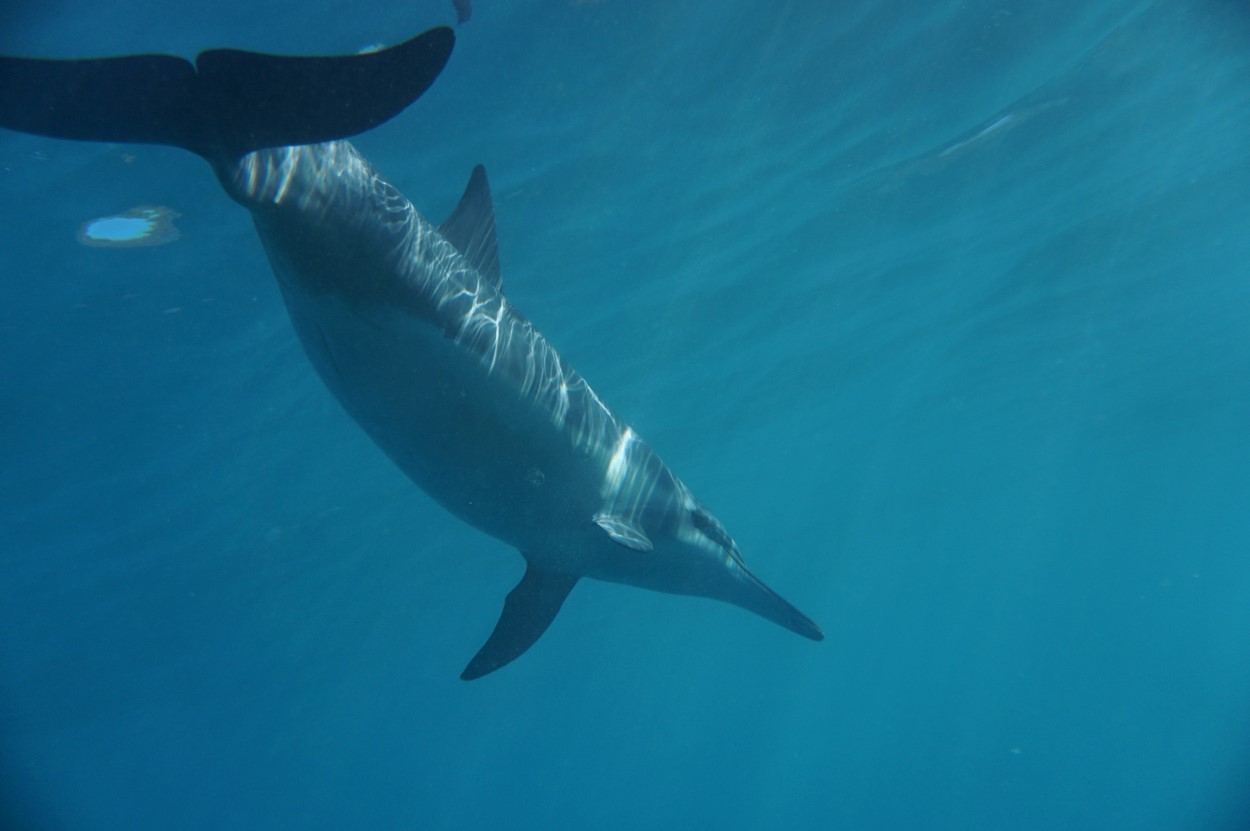
Learning the Hawaiian culture integrating with the nature through a dolphin tour -

-
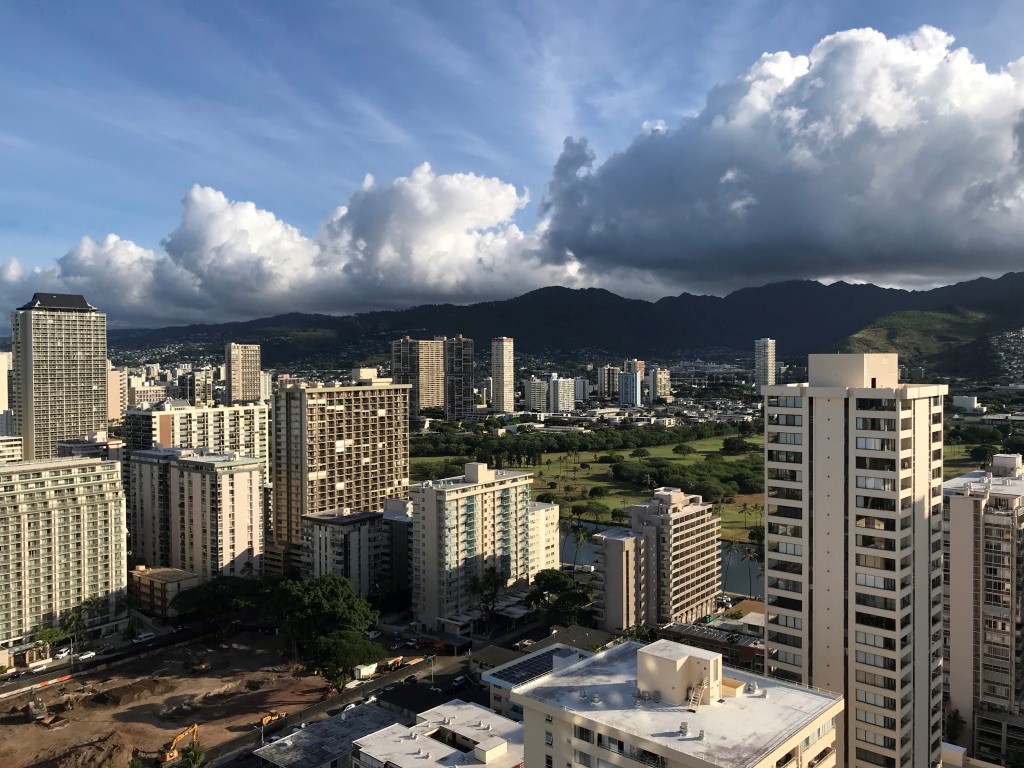
Waikiki Town and mountains and the sky -
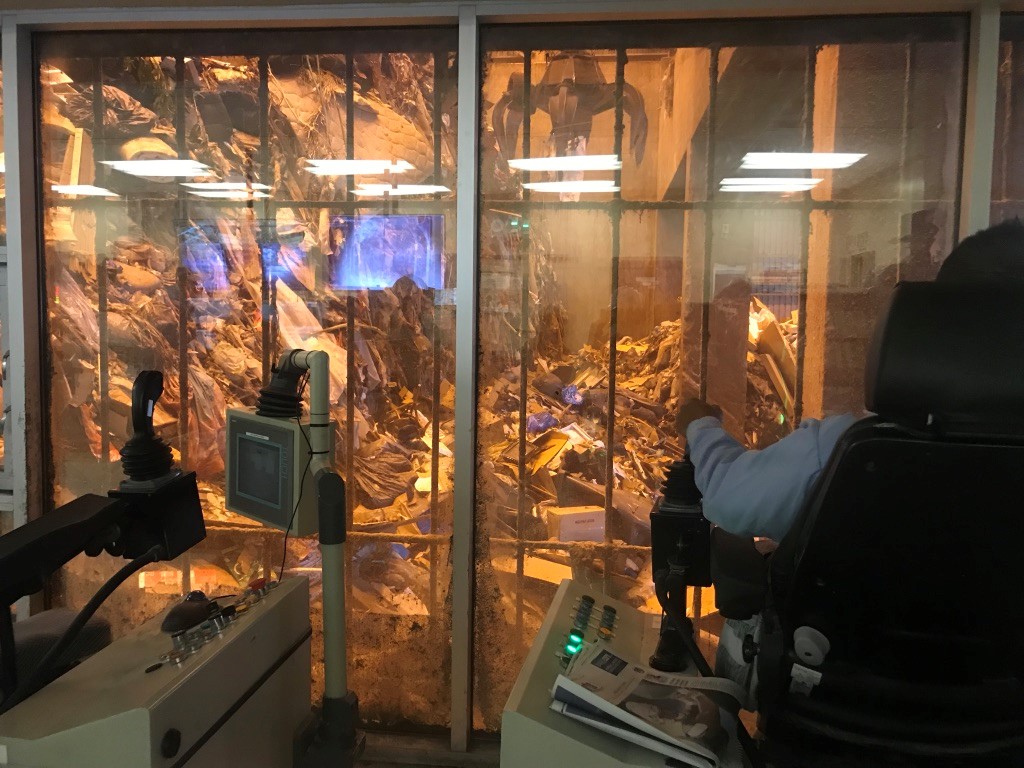
H-Power incinerator -
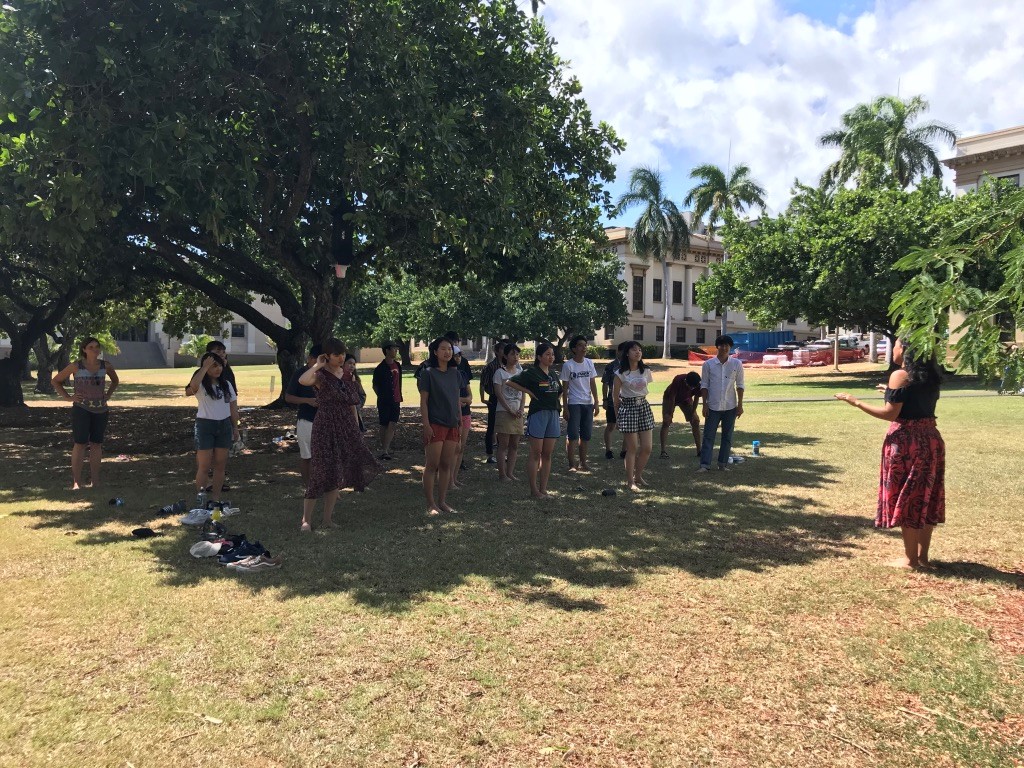
Practicing hula with Tohoku Univ. students -
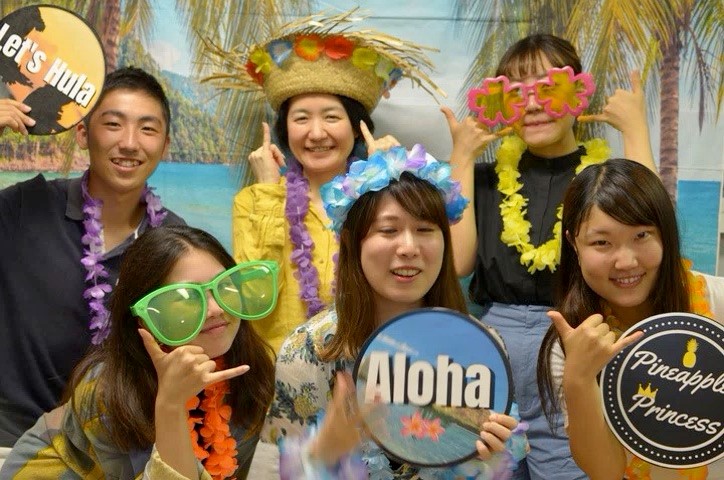
A special photo shot a welcome party -
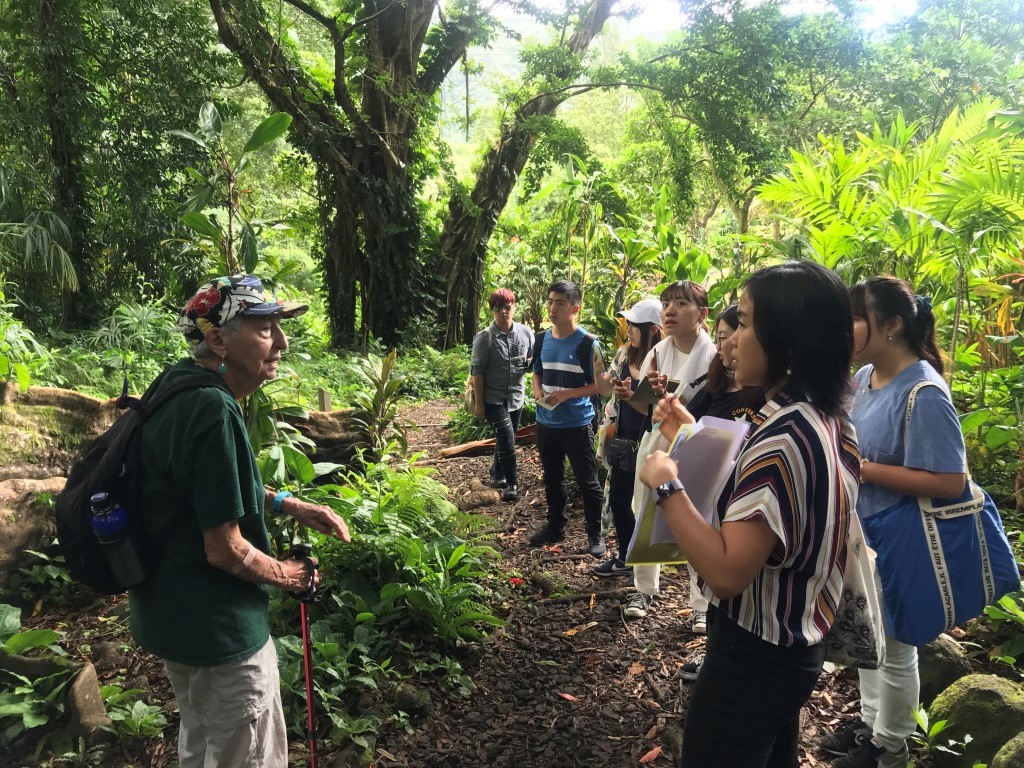
Learning about plants in Hawaii from a 90 year-old arboretum volunteer, the “knowledgeable Dell” -
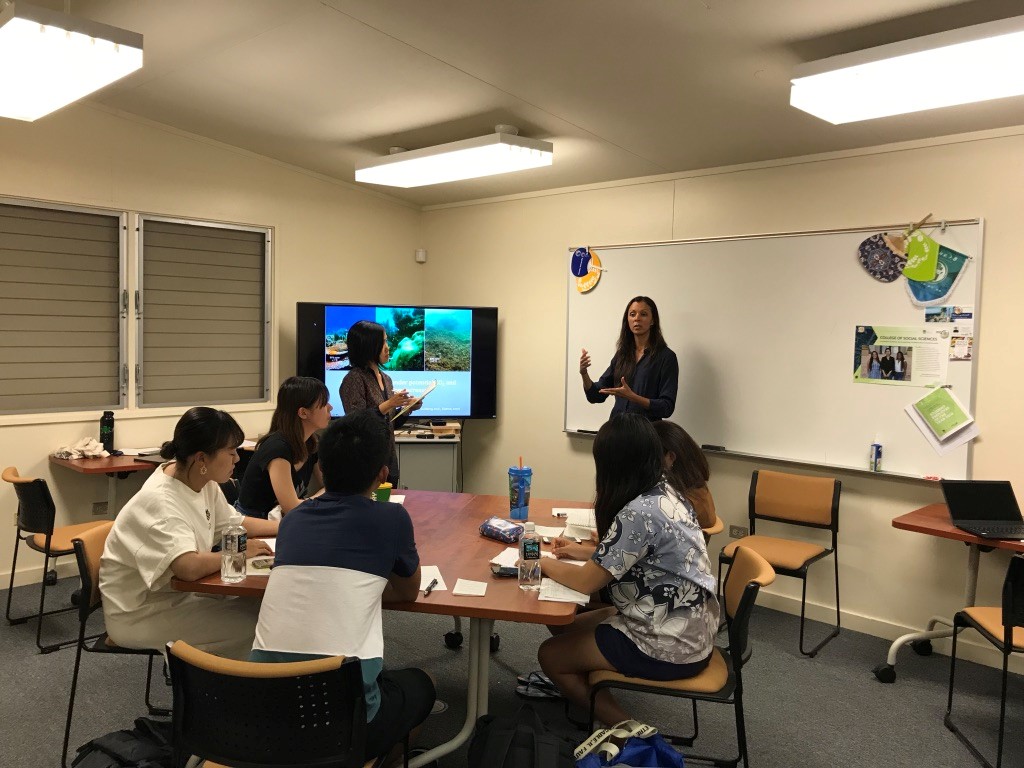
Prof. Melissa’s lecture on climate change and species conservation -

Separating endemic species and alien species -

Feeding the sharks at the HIMB, Coconut Island -
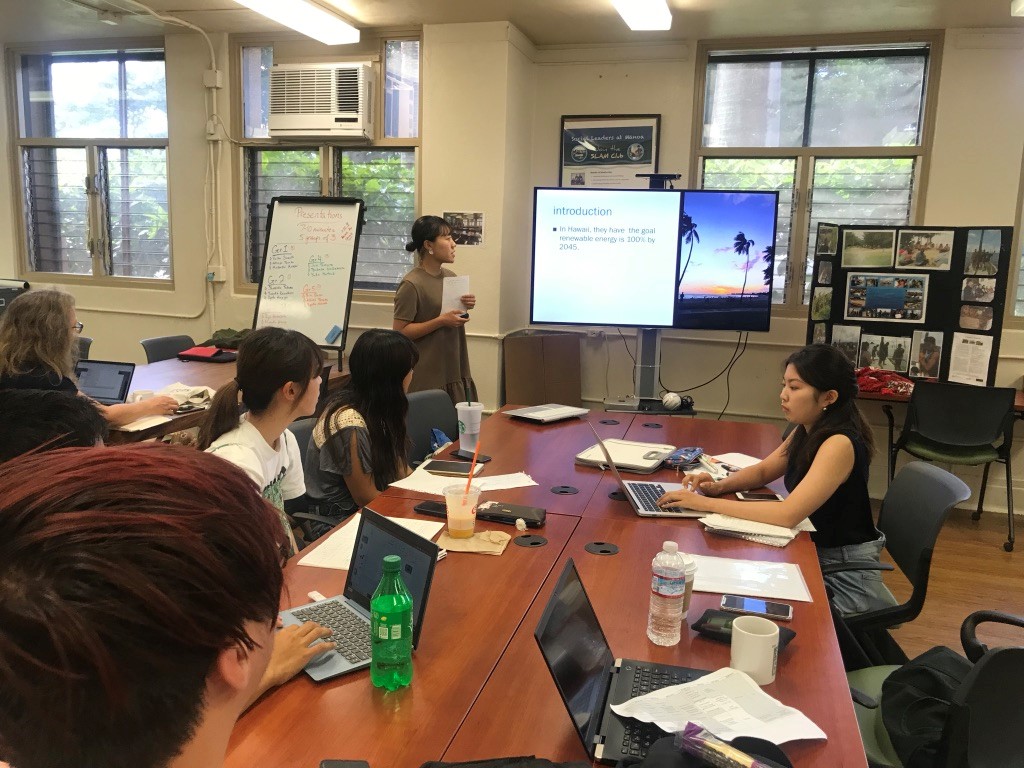
Students’ presentation on the last day -

After the hula performance, a souvenir photo with everyone -
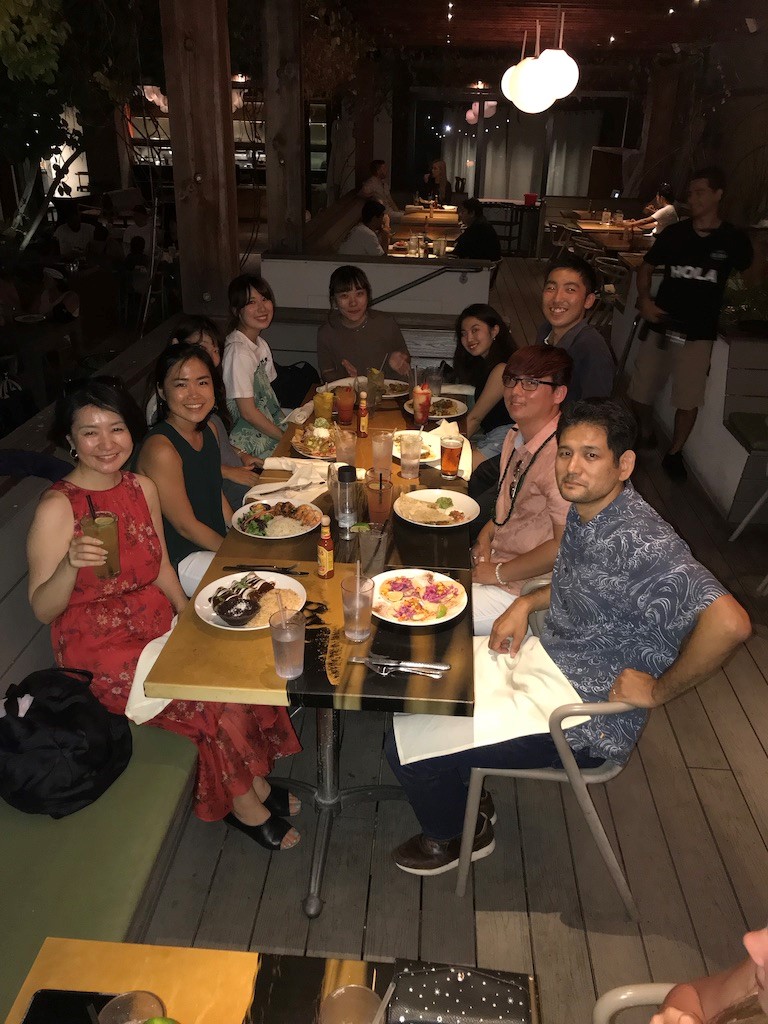
Last supper at a Mexican restaurant with thanks -
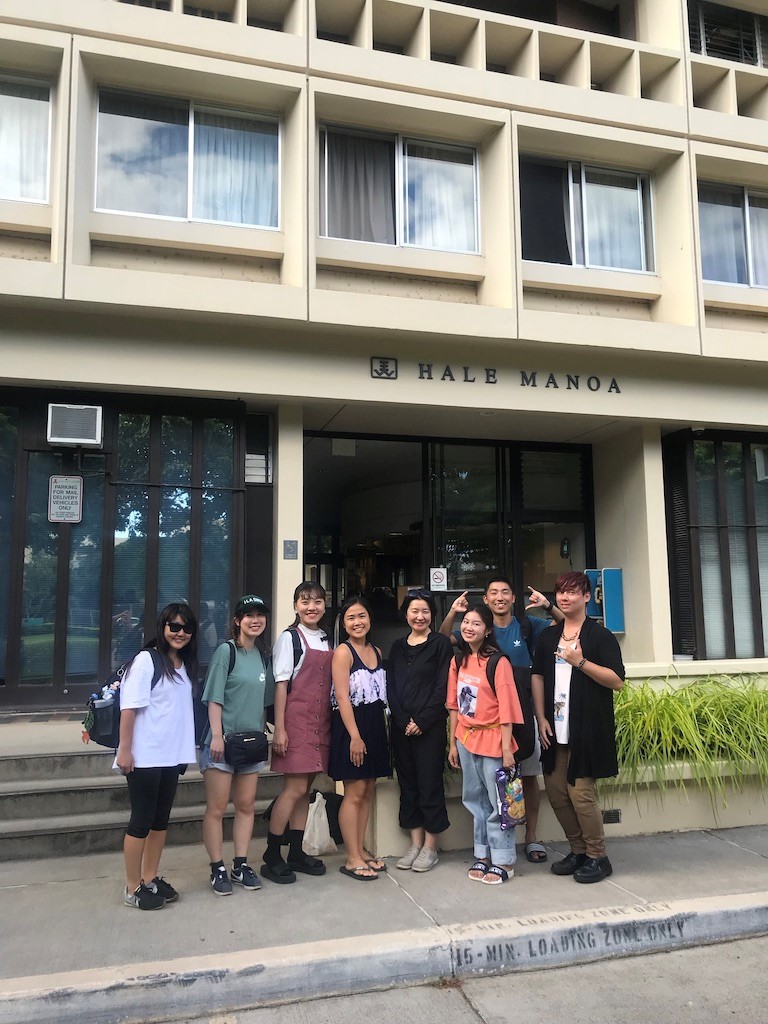
Final photo at the Hale Manoa dormitory before the departure